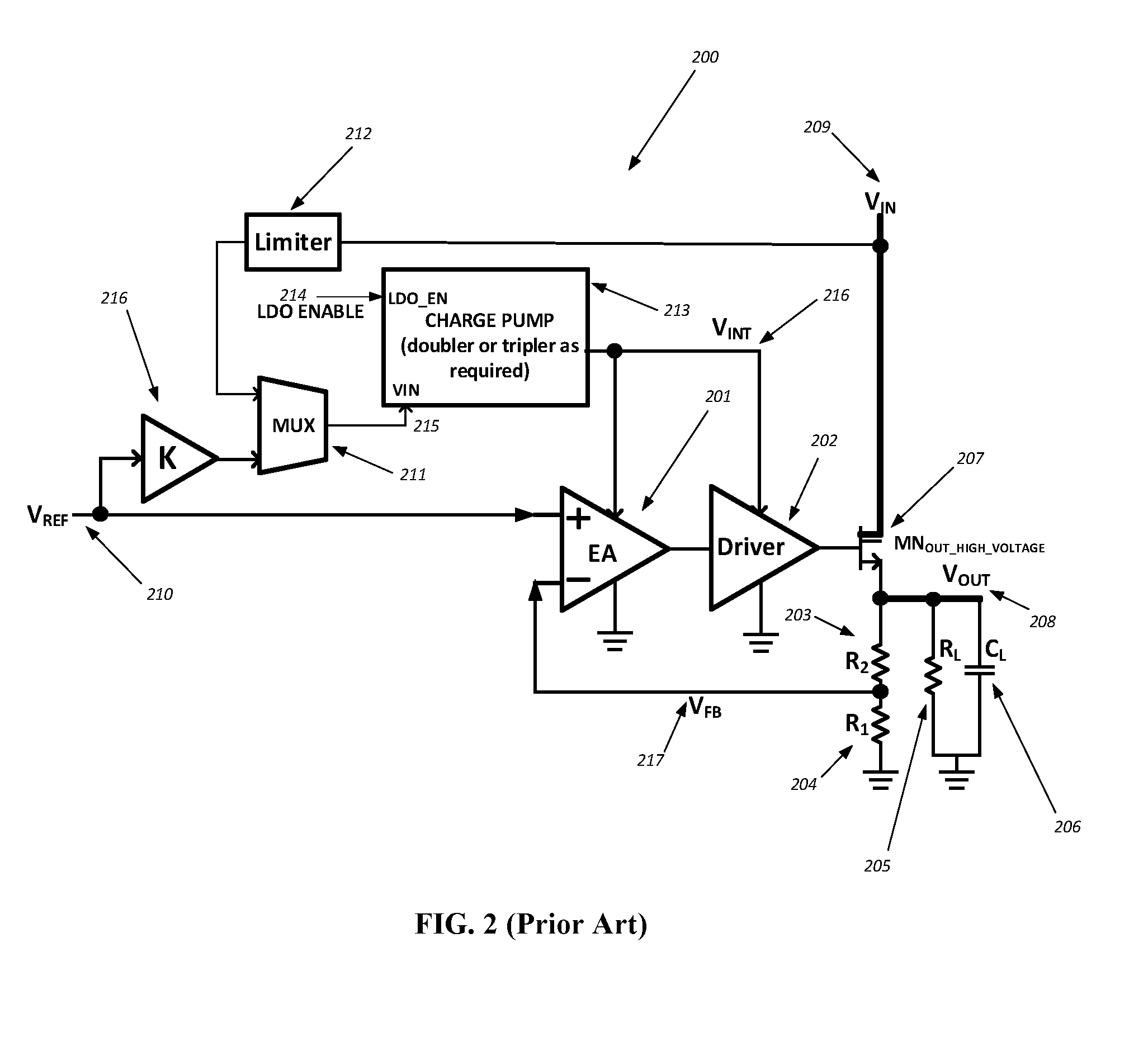Voltage regulator with dynamic charge pump control
a voltage regulator and dynamic charge technology, applied in the direction of instruments, power conversion systems, and apparatus without intermediate ac conversion, can solve the problems of large die area of charge pump blocks, and large amount of coupling to the regulator output, so as to minimize the glitches on the regulator output and minimize the glitches
- Summary
- Abstract
- Description
- Claims
- Application Information
AI Technical Summary
Benefits of technology
Problems solved by technology
Method used
Image
Examples
Embodiment Construction
[0032]Aspects of the present disclosure are shown in the above-identified drawings and are described below. In the description, like or identical reference numerals are used to identify common or similar elements. The drawings are not necessarily to scale and certain features may be shown exaggerated in scale or in schematic in the interest of clarity and conciseness.
[0033]In accordance with embodiments of this patent, innovative solutions are provided which address the quiescent current problem by employing modified architectures that dynamically control the charge pumps and their associated circuits to keep them ON only when it is really required, while turning it OFF for significant chunks of time for which it is not needed
[0034]In accordance with embodiments of the invention, if it is desired to achieve low drop-out, in addition to low quiescent current, further innovations are proposed that use multiple input floating gate NMOS transistors as a pass device (1000) (FIG. 10), bia...
PUM
 Login to View More
Login to View More Abstract
Description
Claims
Application Information
 Login to View More
Login to View More - R&D
- Intellectual Property
- Life Sciences
- Materials
- Tech Scout
- Unparalleled Data Quality
- Higher Quality Content
- 60% Fewer Hallucinations
Browse by: Latest US Patents, China's latest patents, Technical Efficacy Thesaurus, Application Domain, Technology Topic, Popular Technical Reports.
© 2025 PatSnap. All rights reserved.Legal|Privacy policy|Modern Slavery Act Transparency Statement|Sitemap|About US| Contact US: help@patsnap.com



